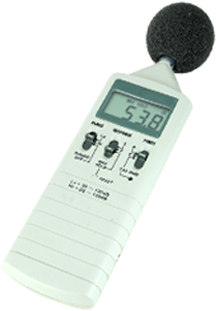Noise Control & Acoustics Division
The Noise Control and Acoustics Division (NCAD) objectives are to establish a program within ASME that will encourage, focus and further the development and application of noise control and acoustics principles to all engineering branches.

About
The Noise Control and Acoustics Division (NCAD) of ASME (American Society of Mechanical Engineers) originated at the ASME Winter Annual Meeting on March 16, 1980. On November 19, 1981, less than two years later at Washington, D.C., NCAD attained full Division status in the ASME technical family. NCAD is the 32nd Technical Division of the ASME and is part of the Council of Engineering's Environment and Transportation Technical Group. Other Divisions in the Group include Aerospace, Rail Transportation, Environmental Engineering, and Materials and Energy Recovery.
The general objective of NCAD is to establish a program within ASME that will encourage, focus and further the development and application of noise control and acoustics principles to all engineering branches. The Division intends to serve its members who represent various disciplines within ASME as well as other organizations. The program will also provide a balance between the theoretical studies of acoustics and its applications in terms of noise control engineering. At the present time there are almost 500 primary members in the Division.
NCAD routinely participates in ASME’s International Mechanical Engineering Conference and Exhibit (IMECE). Every few years the Annual Conference for NCAD is held in conjunction with other acoustic societies, which for 2012 was Internoise 2012. There are several awards that are presented at the annual conference. The Rayleigh Lecture award is given to an individual who has made pioneering contributions to the sciences as well as application to industry. A significant monetary award is also given to the best student-authored technical paper presented at the conference.
The Division also awards the Per Bruel Gold Medal for Noise Control and Acoustics in recognition of eminent achievement and extraordinary merit in the field of noise control and acoustics. The achievement includes useful applications of the principles of noise control and acoustics to the art and science of mechanical engineering. This medal, established in 1987, honors Dr. Per Bruel who pioneered the development of sophisticated noise and vibration measuring and processing equipment. A monetary award of $1000 is given with the award.
NCAD is managed by an Executive and Technical committee. The Executive Committee consists of five members that serve a five year term. The technical committees represent the many interests of mechanical engineers in the field of noise control and acoustics, and are crucial to the long range success of the Division. The three branches of the technical committees are Active and Passive Control, Structural Acoustics, and, Aero/Hydro Acoustics.
Honors & Awards
Society Level Awards
Division Level Awards
Important Award Information For Recipients of Monetary Awards
Please note that honorariums cannot be distributed without receipt of applicable tax forms. If you are a recipient of a monetary award, you will be contacted by ASME staff regarding tax forms you will need to complete, as well as how to submit them to us.
Leadership
2024-2025 NCAD Leadership
Chair, Yousof Azizi
Vice Chair, Michael Frazier
Secretary, Fabio Semperlotti
Past Chair, Guoliang Huang
Member, at Large, Jihong Ma
Member at Large, Zhenhua Tian
Resources
Join us for the upcoming webinar. Register at: https://asme.zoom.us/meeting/register/sJ_JLJ2LR4GMQJOIQdhKUg

NCAD General Committee Meeting and Awards Ceremony
Enjoy this recording of our awardees being recognized at IMECE 2021 - Virtual.
IMECE 2021 Rayleigh Lecture
Enjoy the 2021 Rayleigh Lecture, Tutorial on Vibroacoustics, presented at IMECE 2021 by Dr. Stephen A. Hambric.